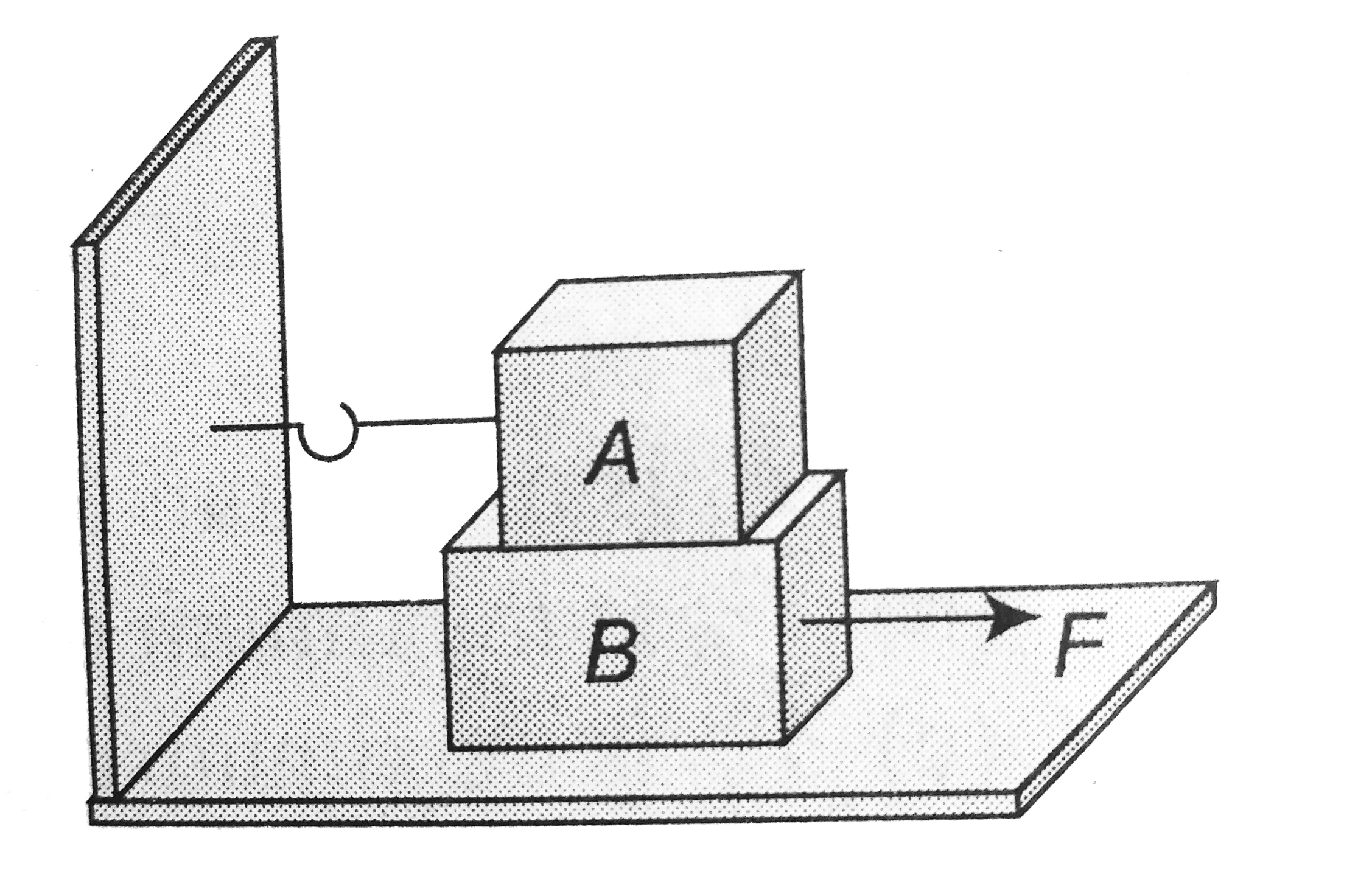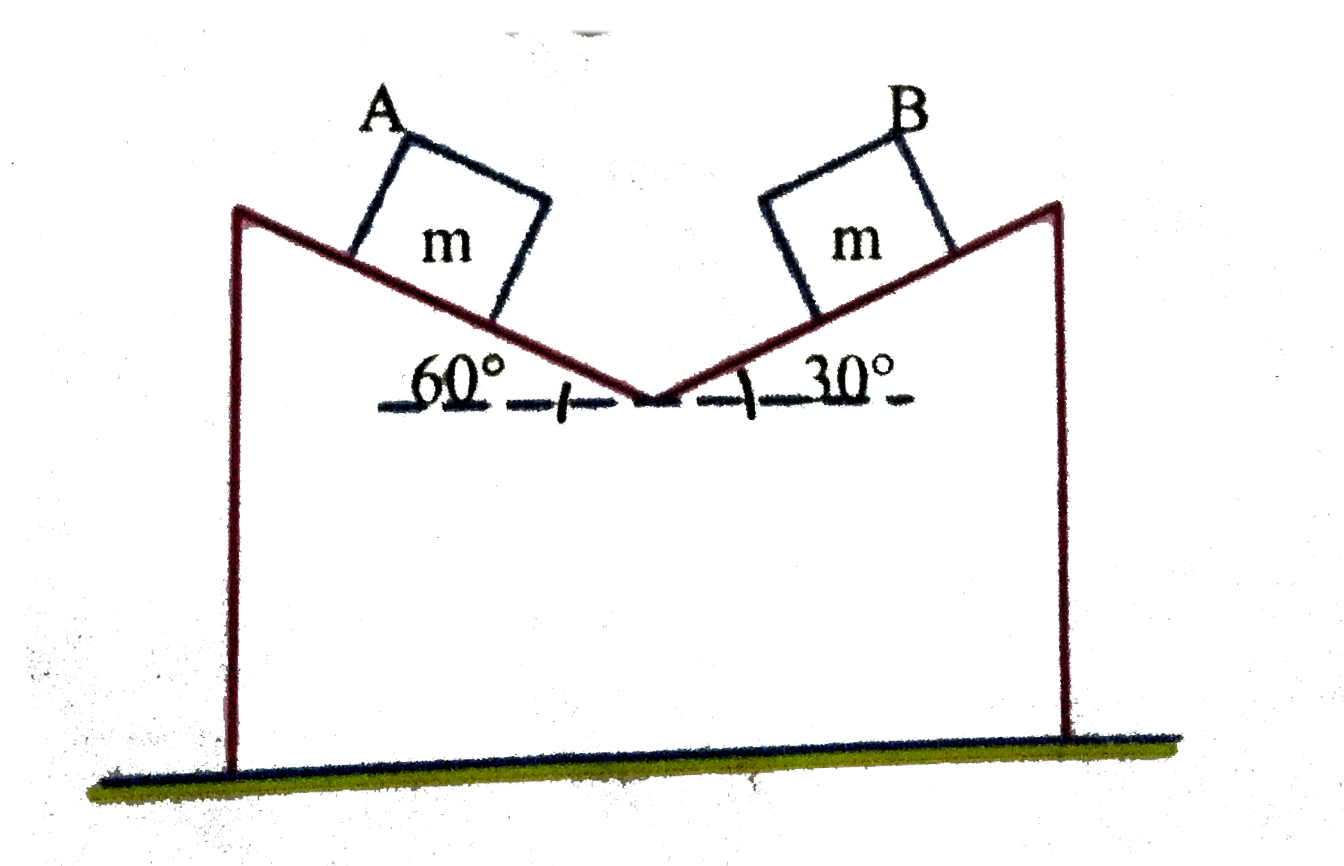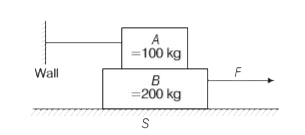An aeroplane requires for take off a speed of 80km/h the run on the ground being 100 m The mass of aeroplane is 104 kg and coefficient of friction between aeroplane and ground is 0.2 What is the maximum force required by the engine of the plane for take off ?
From 3rd equation of motion for take off,
[80×518]2=02+2a×100
i.e., a=(200/81)m/s2.....(i)
Now if F is the required force, for take off
F−f≥ma
or F≥ma+μmg [as f=μmg]
or F≥104[20081+0.2×9.8]
or F≥4.43×104N
So, the minimum force required by the engine of plane for take off is 4.43×104N.
Topper's Solved these Questions
- MOTION IN A STRAIGHT LINEBOOK - GRB PUBLICATIONCHAPTER - MOTION IN A STRAIGHT LINEEXERCISE - Problem
14 Videos
- MOTION IN A STRAIGHT LINEBOOK - GRB PUBLICATIONCHAPTER - MOTION IN A STRAIGHT LINEEXERCISE - Problems and Practice
16 Videos
- FRICTION AND CIRCULAR MOTION BOOK - GRB PUBLICATIONCHAPTER - FRICTION AND CIRCULAR MOTION EXERCISE - Comprehension type
11 Videos
- MOTION IN TWO AND THREE DIMENSIONSBOOK - GRB PUBLICATIONCHAPTER - MOTION IN TWO AND THREE DIMENSIONSEXERCISE - All Questions
210 Videos
Similar Questions
An aeroplane requires for take off a speed of 80km/h the run on the ground being 100 m The mass of aeroplane is 104 kg and ground is 0.2 What is the maximum force required by the engine of the plane for take off ?
View SolutionFind the force required to move a train of mass 105 kg up an incline of 1 in 50 with an acceleration of 2ms−2. Coefficient of friction between the train and rails is 0.005. Take g=102.
View Solution
Knowledge Check
An aeroplane requires for take off a speed of 108 kmph the run on the ground being 100m. Mass of the plane is 104kg and the coefficient of friction between the plane and the ground is 0.2. Assuming the plane accelerates uniformly the minimum force required is (g=10ms−2)
A2×104NB2.43×104NC6.5×104ND8.86×104NAn aeroplane requires for take off a speed of 108 kmph the run on the ground being 100m mass of the plane is 104kg and the coefficinet of friction between the plane and the ground is 0.2. Assuming the plane accelerates uniformly the minimum force required is (g=10ms−2) .
A2×104NB2.43×104NC6.5×104ND8.86×104NA car is taking a turn of radius 400 m on a horizontal circle . Coefficient of friction between the ground and tyres of car is 0.2 . Find the maximum speed with a safe turn can be taken
A80 m/sB40√2msC20√2msDNone of these
A block A with mass 100kg is resting on another block B of mass 200kg. As shown in figure a horizontal rope tied to a wall hold it. The coefficient of friction between A and B is 0.2 while coefficient of friction between B and the ground is 0.3 . the minimum required force F to start moving B will be.

View SolutionTwo small blcok m=2kg each kept on wedge of mass 12kg. There is no friction between blocks and wedge coefficient of friction between wedge and ground in μ=0.3. Calculate frictional force by ground on wedge.

View SolutionA 50 kg man is standing at the centre of a 30 kg platform A. Length of the platform is 10 m and coefficient of friction between the platform and the horizontal ground is 0.2. Man is holding one end of a light rope which is connected to a 50 kg box B. The coefficient of friction between the box and the ground is 0.5. The man pulls the rope so as to slowly move the box and ensuring that he himself does not move relative to the ground. If the shoes of the man does not slip on the platform, calculate how much time it will take for the man to fall off the platform. Assume that rope remains horizontal, and coefficient of friction between shoes and the platform is 0.6.

View SolutionIn the show arrangement mass of A=1 kg, mass of B= 2kg. Coefficient of friction between A and B =0.2

There is no friction between B and ground. The frictional force exerted by A on B equals.
View SolutionA block A of mass 100 kg rests on another block B of mass 200 kg and is tied to a wall as shown in the figure. The coefficient of friction between A and B is 0.2 and that between B and ground is 0.3. The minimum force required to move the block B is (g=10ms−2)

View Solution
